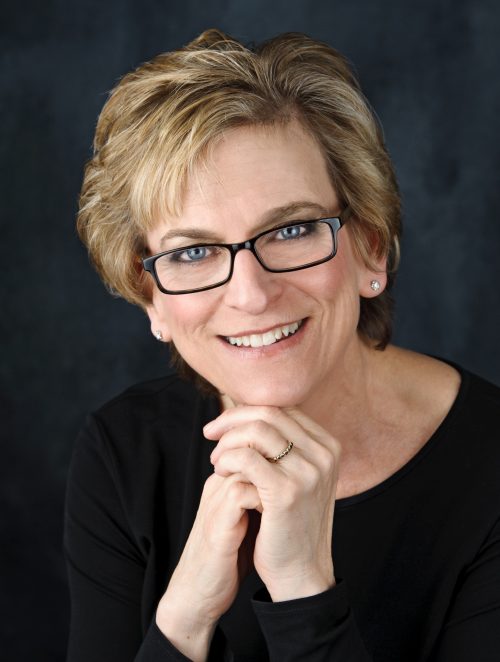Twenty years ago Anita Diamant transformed the landscape of historical fiction with the publication of “The Red Tent.” Diamant based her novel on the story of Dinah, Jacob’s only daughter to be explicitly referred to by name in the Torah.
In a recent interview with JewishBoston, Diamant recalled that she was drawn to using a biblical story as the basis for her first foray into fiction for a few reasons. “At the time, my rabbi, Lawrence Kushner, was teaching classes on midrash,” she said. “It was a wonderful, playful and thoughtful approach to the study of Torah. The Bill Moyers’ series “Genesis: A Living Conversation,” where clergy from different religious traditions talked about characters in the Bible, was also popular at the time. I thought it might be fruitful to look at those figures.”
Diamant first thought she might write about Rachel and Leah, but couldn’t come up with a compelling plot around them. Instead, the story of Dinah beckoned. She observed: “We don’t really know what happened to Dinah. It’s her brothers who tell us her fate and called what happened to her a rape. It didn’t look like rape to me. Shechem [the Canaanite prince who fell in love with Dinah] was willing to do anything to have her as his wife. But we don’t have Dinah’s side of the story. That became the untold story that I could invent. Then I had to figure out what occurred after the story.”
In Diamant’s narrative, Dinah marries Shechem and gives birth to his son. She ends up in Egypt, where her brother Joseph is viceroy and her son is brought up in a royal household. During that time, she also comes to terms with her brothers Simon and Levi’s wholesale slaughter of Shechem and his people.
As compelling as the book was, it did not initially attract widespread attention. Diamant went to every book group that invited her to talk and hatched a plan to rescue the hardcover copies that were about to be pulped or destroyed and instead sent them to the Women’s Rabbinic Network of the Reform movement and the Reconstructionist Rabbinical Association. With that, and the support of independent bookstores, the book soon gained traction and landed on The New York Times Best Sellers list.
Despite the book’s growing success, some Jews were critical of Diamant for implying that Dinah’s relationship with Shechem was consensual. “I’ve had women who went to Orthodox yeshivas tell me they were not allowed to read the story of Dinah,” she said. From the beginning, Diamant had a strong fan base among Christians, including students and teachers in Catholic high schools. “I got mail from these girls telling me the administration in their high schools wanted to ban the book,” she said. “But the teaching sisters brought it into their classrooms anyway.”

Diamant has since published four novels, as well as a collection of essays. Before and since publication of “The Red Tent,” she wrote highly acclaimed guidebooks on celebrating Jewish lifecycle events, including marriage, conversion, welcoming babies into Jewish life and saying the Kaddish. The books, she noted, were almost always written in response to events in her life. “When I was getting married I asked my rabbi what I should read, and the books were pretty inadequate,” she said. “There was a hole in the bookshelf, and so I wrote my own Jewish wedding guide. I wrote ‘The New Jewish Baby Book: Names, Ceremonies & Customs: A Guide for Today’s Families’ after I had my own daughter.”
Diamant’s latest book is the third edition of her first book, “The New Jewish Wedding.” Now retitled “The Jewish Wedding Now,” she leveled the playing field a bit. “In previous editions of ‘The New Jewish Wedding,’ I presented traditional examples first and then more liberal choices after them,” she said. “It inadvertently implied that the former was more important or authentic, and I was careful not to do that in this edition.”
To that end, “The Jewish Wedding Now” features feminist Jewish scholar Rachel Adler’s alternative wedding ceremony, which is pointedly not based on a groom acquiring a bride. Diamant explained: “It’s called Brit Ahuvim, Lovers’ Covenant, a halachically or legally defensible ritual that focuses on partnership law as opposed to property law. In the second edition, it was in the appendix and now in this third edition it is part of the ‘Under the Huppah’ chapter.”
Diamant’s book on conversion—“Choosing a Jewish Life: A Handbook for People Converting to Judaism and for Their Family and Friends”—had her spending a lot of time at the local Boston mikveh, which she felt was neither “a welcoming nor a beautiful place. It was built for niddah, or traditional immersion.” In response, Diamant sounded a clarion call in an essay called “Why I Want a Mikveh.” In part, she declared: “I want a mikveh that encourages the prayers of the heart in Jews of every denomination and description. Thus I want a mikveh that is kosher in every dimension, that follows all halachic requirements regarding shape, space, the collection of natural water, maintenance.”
Shortly after the essay took off, a board was convened and parlor meetings were organized to make Diamant’s vision of a community mikveh a reality. “The Boston community took a big leap and women got behind the idea of using a mikveh not exclusively for traditional purposes,” she said. Mayyim Hayyim: Living Waters Community Mikveh opened its doors in Newton in 2004.
These days Diamant is looking forward to the publication of an update of “Saying Kaddish: How to Comfort the Dying, Bury the Dead & Mourn as a Jew.” She wrote the first edition shortly after her father died and said, “It’s written in the voice of someone who has just walked through that grieving process.” She’s also blogging about her new “crush” on Shakespeare. She encountered the bard in a new light through a project called “Shakespeare Work Out for Adults,” given under the auspices of the Boston-based Actors’ Shakespeare Project. Her intention is “to try on Shakespeare’s words for the first time.” It’s a laudable goal and a natural one for a woman who almost singlehandedly changed the way people look at the Bible in these times.
This post has been contributed by a third party. The opinions, facts and any media content are presented solely by the author, and JewishBoston assumes no responsibility for them. Want to add your voice to the conversation? Publish your own post here. MORE



